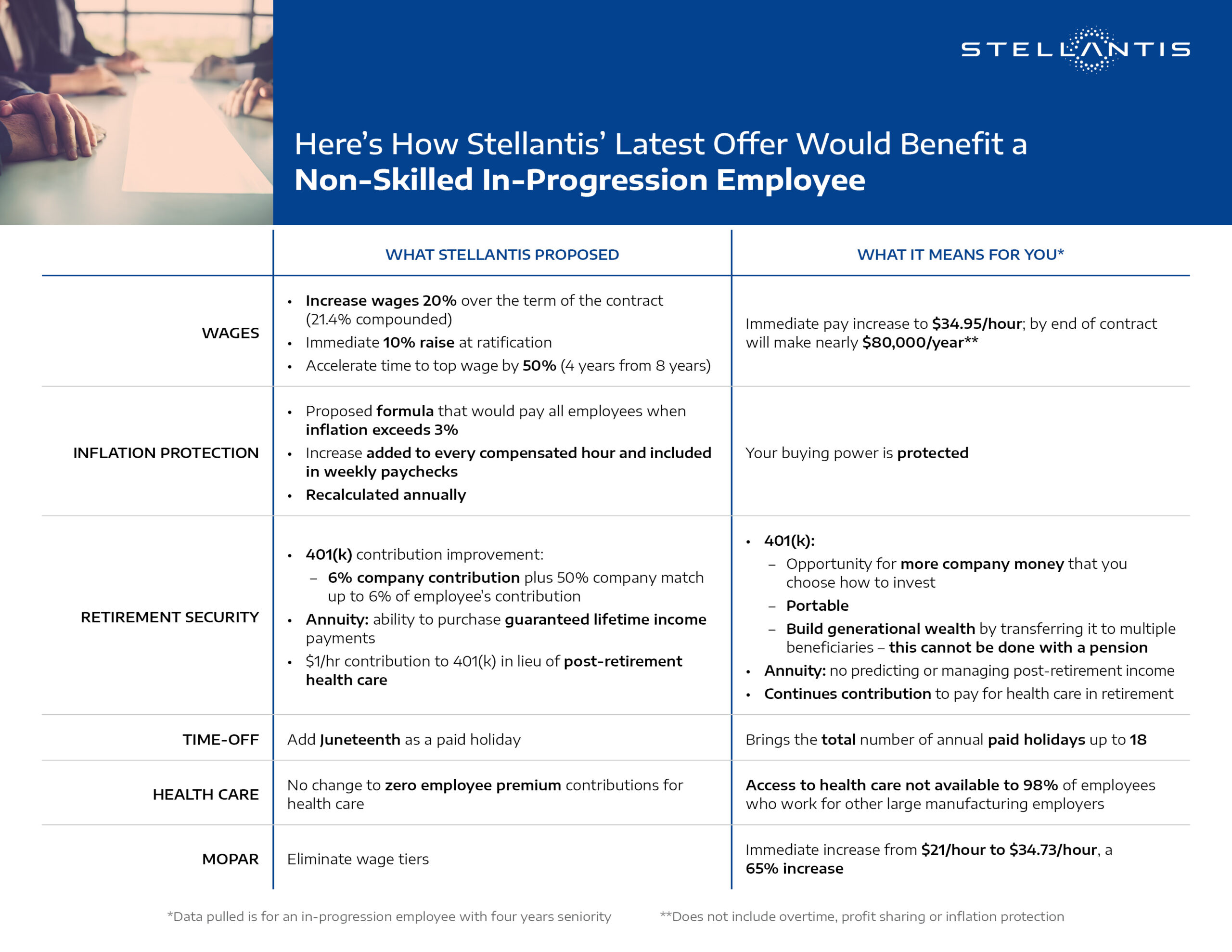Information Regarding the Negotiations

Transformation Costs
One of the ways Stellantis measures its manufacturing efficiency around the world is through Transformation Costs, a common term in manufacturing that refers to the total cost of manufacturing a product, excluding raw materials. Transformation costs include depreciation of assets, equipment, maintenance, leases, scrap, utilities and purchased services. Labor is also a significant component of transformation costs, accounting for one of the largest percentages behind purchased services.
Transformation Costs, a common term in manufacturing that refers to the total cost of manufacturing a product, excluding raw materials.
By including Transformation Costs in the overall manufacturing costs, the Company has a more accurate measure of spending on a per vehicle basis and can better optimize how we use manpower, equipment and resources to keep costs down. This benefits both the Company and our employees.
To help the Company remain competitive, especially as we transition to building EVs, we need to continue to lower our transformation costs. This includes cutting waste and improving efficiency across every part of the business and the entire manufacturing process, including reducing product complexity and reusing resources.
On the shop floor, employees can support this effort by increasing through-put and addressing production issues; using the company’s production methodology – the Stellantis Production Way (SPW) – to become more efficient; sharing best practices across the organization; and fully utilizing equipment and people’s talent.
Coming to work as scheduled is another way employees can impact transformation costs.
Coming to work as scheduled is another way employees can impact transformation costs. It means that skilled operators are on the job so that the lines and other operations run efficiently, and our plants can meet production targets, building quality vehicles that meet or exceed the expectations of our customers.
©2025 Stellantis Negotiations 2023 All Rights Reserved.
